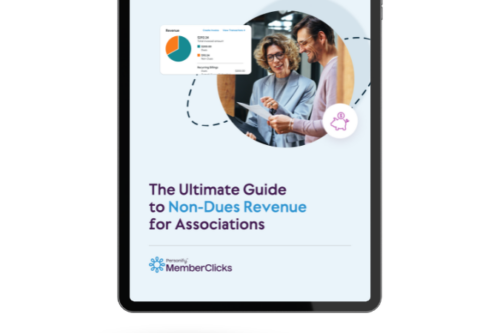At first glance, membership chair responsibilities may not seem like the most important in an organization. Between raising funds, running programs, and staying true to the mission, every nonprofit or chamber’s board has a thousand tasks at any given time. Who’s to say which is most important?
Yet without members, you don’t have an organization. For that reason, it is critical you have a comprehensive overview of the responsibilities of a membership chair. This blog post will cover key duties, best practices, and tips for success so you can enhance your member engagement, whether you belong to a trade or professional association, nonprofit, or any other organization.
Understanding the Role of a Membership Chair
Although they have an important word in common, the membership chair is distinct from the board chair. While the latter is responsible for everything the nonprofit or association does, the membership chair is only responsible for bringing new members to the organization.
Members are crucial to the success of your organization, because memberships and donations are key to growing your programs and serving bigger audiences. Membership chairs perform a lot of duties, the main ones including recruitment, engagement, and retention … as well as reporting on how well each of these activities goes.
Let’s take a closer look.
Key Responsibilities of a Membership Chair
What exactly are the membership chair responsibilities? They fall into three basic categories: getting members, helping them understand the mission and get involved, and keeping them on board over the long haul.
Membership Recruitment
Prime among membership chair responsibilities is the task of developing strategies for attracting new members. This means collaborating with marketing and outreach teams, utilizing digital tools and platforms for recruitment, and crafting compelling and legally accurate membership agreements.
To recruit new members, you need well-rounded marketing plans that reach people where they are. Oftentimes that’s online (blogs, advertising, social media). However, there are plenty of physical locations as well: businesses, notice boards, universities, and so forth.
Member Retention
It’s not enough simply to bring members on board. At any professional association, trade organization, or chamber of commerce, the job is to keep them engaged as well … otherwise you risk membership churn, which is bad for your bottom line.
Good retention results from convincing people that your services are valuable and they still need them. Your challenge is to craft techniques for improving member satisfaction and engagement as well as regularly checking in with members and addressing their concerns.
Member Engagement
Keeping members involved is key, and involves:
- Organizing events and activities to keep members involved
- Creating and managing member recognition programs
- Encouraging member participation in committees and groups
It’s not enough simply to put on these programs, though; you also have to keep track of them.
Data Management and Reporting
Data collection, analysis, and reporting are also key components of the membership chair responsibilities. Without good data, you can’t know if your endeavors are working, after all. That’s why you must:
- Maintain accurate membership records
- Analyze membership data to identify trends and opportunities
- Report membership statistics to the board and other stakeholders
Best Practices for a Successful Membership Chair
So now you know what to do, but how should you get the job done? Enter best practices.
Effective Communication
First and foremost, if you want to sell memberships, you need to know how to communicate. There are the logistics – regularly updating members on association news and events as well as listening to member feedback and acting on it – but there’s also the communication style itself. Membership chairs are leaders, so if you need to take a course or read a book on management, there’s no shame in that.
Relationship Building
The happy news is, good communication will get you halfway to good relationships. From there, you should deepen those relationships with members by learning who they are, networking with other membership chairs and association leaders, and helping influence your offerings to meet their needs.
Continuous Learning and Improvement
As with learning to lead, you must learn in other ways too. That includes:
- Staying updated with industry trends and best practices
- Attending relevant workshops and training sessions
Documentation Review
Lastly, your membership chair responsibilities require that you:
- Ensure all membership-related documents are current and accurate
- Regularly review bylaws, membership guidelines, and policies
Board Meeting Updates
As membership chair, you need the entire organization on board with your activities. As such, you should check in with the board at every meeting. Use this time to update the board on membership happenings since the last convening.
You don’t need much time; a minute or two is enough to share all the pertinent news and make any requests you might have. Highlight key achievements and upcoming initiatives so that everyone is briefed, then take questions if there are any.
Disengaged Member Outreach
When members do distance themselves, as they inevitably will, it’s part of the membership chair responsibilities to reach out to them. For those who have not participated recently, it’s important to understand their concerns and encourage re-engagement within the context of solving those concerns.
Online Updates
Members must stay regularly informed, or you can pretty much guarantee their disengagement. As such, you should:
- Regularly update the association’s website and social media pages.
- Ensure information is accurate and reflects current events and news.
Common Challenges and How to Overcome Them
Membership chair responsibilities come with a lot of challenges, unfortunately. Here are a few of them and their solutions.
Member Apathy
Member apathy is real. People sign up for membership or make donations when they are experiencing a particular struggle, and once you solve the struggle, they may not feel that same imperative to continue. Your job is to ensure that they still see your value.
This comes back to membership retention, discussed above. Yet boosting member engagement and interest is not an easy thing to do. Happily, there are ways, such as:
- Holding events with free or subsidized tickets
- Offering free benefits for members
- Showing people how to “level up”
- Putting member names on playbills, tiles, plaques, etc.
Limited Resources
Unfortunately, you may have to perform your membership chair responsibilities within strict boundaries. Many nonprofits, chambers of commerce, and professional organizations start out with a small board, little capital, few staffers, and a short list of members.
You have to make due anyway. That means utilizing available resources efficiently and seeking additional support where needed. Don’t be afraid to ask for help from the chairperson, other board members, and people in your community where needed.
Balancing Responsibilities
As membership chair, you have so many different items on your plate. Not to mention the fact that many board members work a full-time job, have children, and live rich lives. It’s a lot to balance, which is why time management skills are so important. A few tips:
- Break larger projects down into smaller tasks.
- Communicate deadlines clearly.
- Learn to say no; if you take on more than you can handle, all your endeavors will suffer.
- Set aside dedicated work time when your phone and email aren’t available.
Examples of Successful Membership Chairs
The membership chair is often an overlooked hero of the nonprofit. As such, you’ll rarely see them celebrated in the news. However, we can take a few lessons from successful membership chairs in our communities.
First, consider the enthusiastic membership chair of the parent teacher association/organization (PTA/PTO). This person is directly responsible for getting new people on board, drumming up donations, hosting events, and generally keeping school the best environment for kiddos.
Or the membership chair of the local chamber of commerce, which brings new businesses on board, educates them on their benefits (and duties), and spreads the gospel of the chamber in the community.
We could list a thousand other examples, but the fact remains: without a membership chair, a
Lessons Learned
So, what are the key takeaways about the responsibilities of a membership chair? In a nutshell, they oversee:
- Recruitment, engagement, and retention of members
- Relationship building, communication, and regular updates at board meetings
- Data management, reporting, and documentation review
- Outreach to disengaged members and overcoming member apathy
- Continuous learning and improvement despite limited resources and sometimes competing responsibilities
- Online updates for the benefit of members and the community
Given the heavy focus on communication, a smart membership chair will always have a powerful membership management solution at their fingertips.
Membership Chair Responsibilities and Best Practices: The Takeaways
Membership chair responsibilities only grow with the size and success of your organization. If you do your job right, you will eventually need help. This might mean more staff members, but it will definitely mean a well-rounded digital solution to help keep all your endeavors organized and provide members with an engaging online space.
If you’d like to learn more about such a solution, we encourage you to take a look at the variety of management solutions available through MemberClicks. There’s a reason we are trusted by so many chambers of commerce, trade organizations, professional associations, and nonprofits: we know what works.
Curious to find out more? Get in touch today!
















